Every other year, in odd-numbered years, I conduct the Utility Fee Survey. This survey was designed to research what fees utilities charge, how much they charge for each fee, and to see what trends, if any, are occurring with fees. Here are links to other Utility Fee Surveys:
2015 Utility Fee Survey Results
2019 Utility Fee Survey Results
2021 Utility Fee Survey Results
2023 Utility Fee Survey Results
The Utility Fee Survey alternates years with the Utility Staffing Survey, which is conducted in even-numbered years. Below are the results of the 2017 Utility Fee Survey.
Demographics of survey respondents
Size of participating utilities
Size of participating utilities under 20,000 accounts
Positions of individuals completing survey
Services provided by responding utilities
Tap fees and impact fee
The survey started with water and sewer tap and impact fees. There are some key distinctions to bear in mind when comparing tap and impact fees.
Tap fees should recover the cost of making the actual water or sewer tap. This includes direct costs such as labor, materials and vehicle use as well as any indirect costs associated with completing the tap. Tap fees are classified as operating revenues.
Impact fees, sometimes called availability fees or system development charges, are designed to cover the incremental capital cost of adding an additional user to the water or sewer system. Impact fees are classified as non-operating revenues.
For utilities charging an impact fee based on number of bedrooms, monthly or daily usage, or square footage, I assumed three bedrooms or 3,000 gallons per month or 1700 square feet.
Residential water tap fees charged by utilities responding to the survey range from $50.00 to $10,925.00 as shown below (clicking on the any of the graphics will open a larger image in a new window):
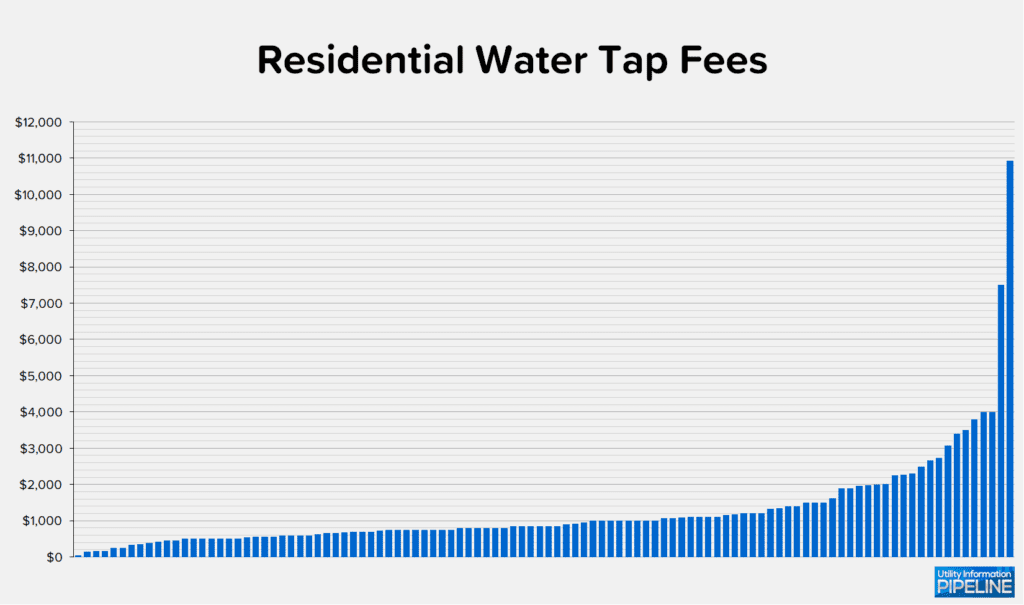
Two other utilities charge based on the time and materials cost incurred for a residential water tap – one at actual cost and one at cost plus ten percent.
Utilities responding to the survey charge residential sewer tap fees ranging from $50.00 to $15,000.00 as depicted by this graph:
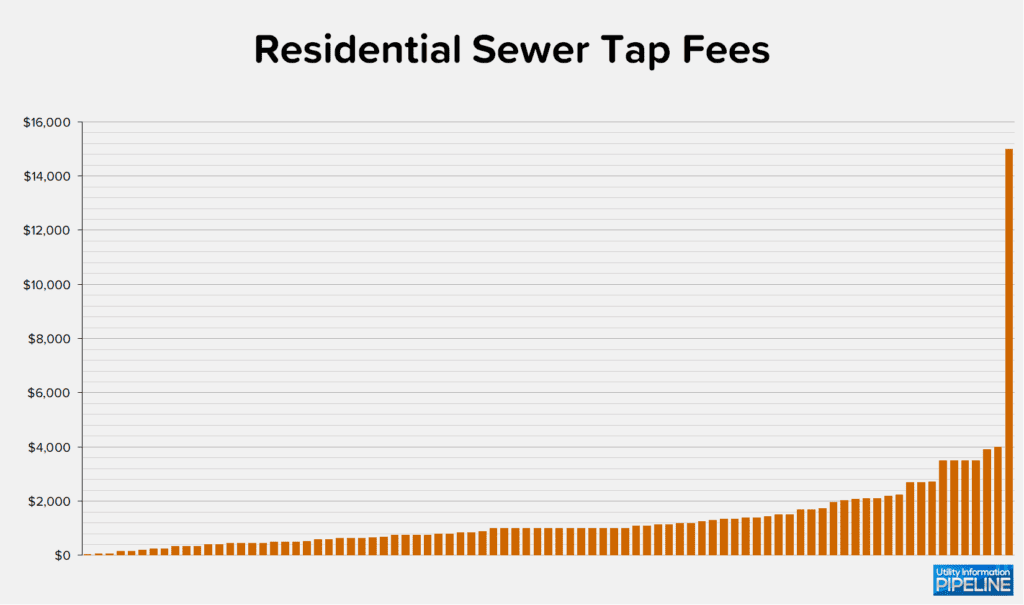
One additional utility charges the actual time and materials cost incurred plus ten percent for a residential sewer tap.
Residential water impact fees charged by utilities responding to the survey range from $200.00 to $3,900.00 as shown in this graph:
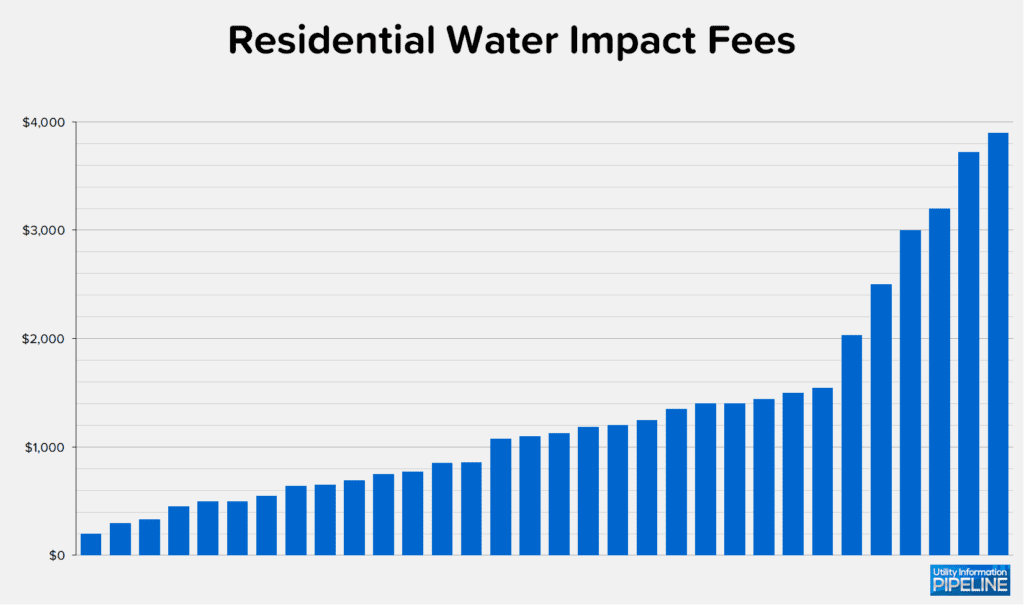
Two additional utilities charge water impact fees that vary based on construction.
Utilities responding to the survey charge residential sewer impact fees ranging from $200.00 to $5,100.00 as shown here:
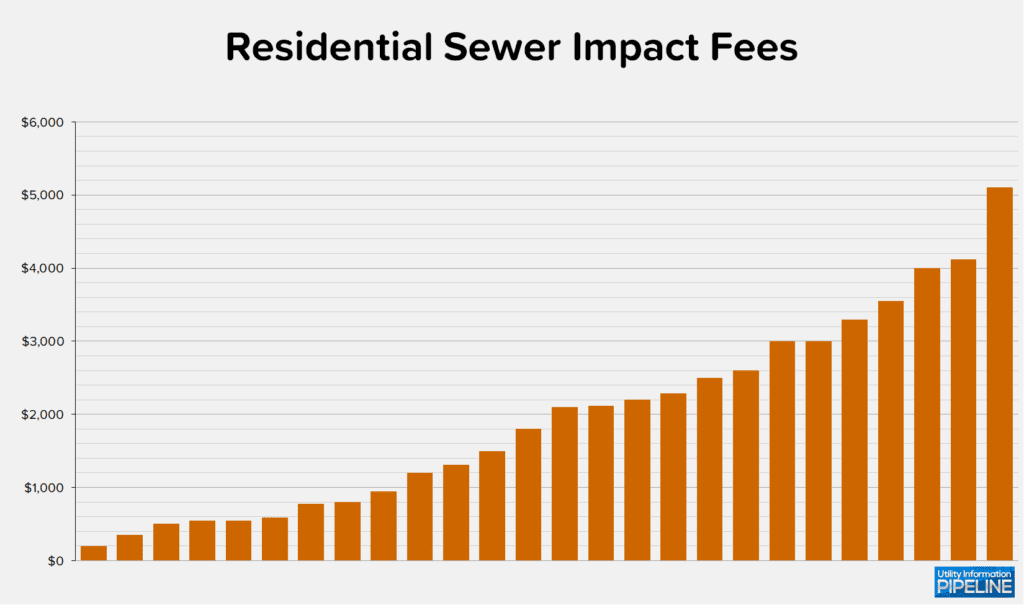
Three additional utilities charge sewer impact fees that vary based on construction.
Late fees
Of the 118 participating utilities, 115 charge a late fee. As shown by this graph, charging a late fee as a percentage of the bill is the most popular method (clicking on the any of the graphics will open a larger image in a new window):
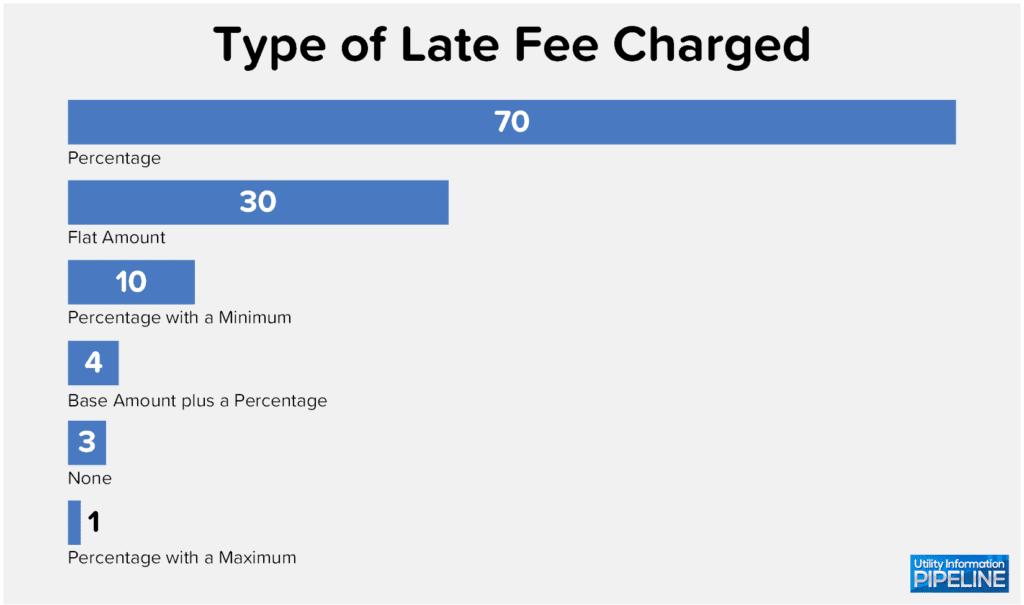
Compared to the 2015 Utility Fee Survey, utilities charging a percentage is up slightly (59.3% vs. 57.7%), while those charging a flat amount is down nearly 9% (26.1% vs. 32.7%).
Utilities that assess the late fee as a percentage charge from 1% to 20%, with 10% again being by far the most popular, as this graph depicts:
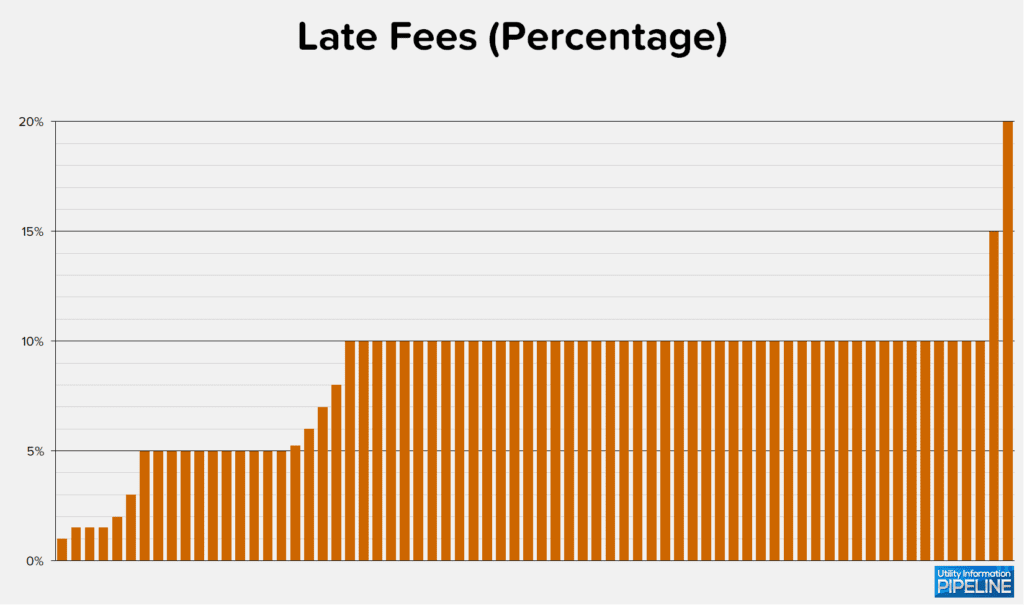
Late fees range from $5.00 to $50.00 for utilities that charge a flat amount. (The utility that charges $50.00 does so in lieu of charging a reconnect fee.) This graph illustrates the late fee flat amounts:
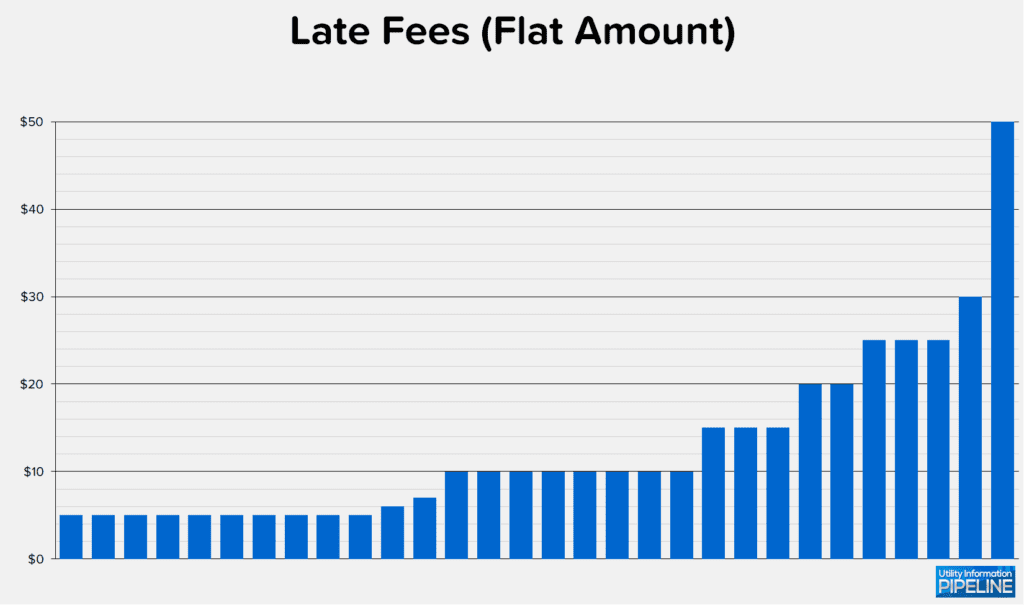
Eight of the utilities charge a hybrid late fee – a combination of a percentage with a minimum amount. Here is a graph showing what they charge:
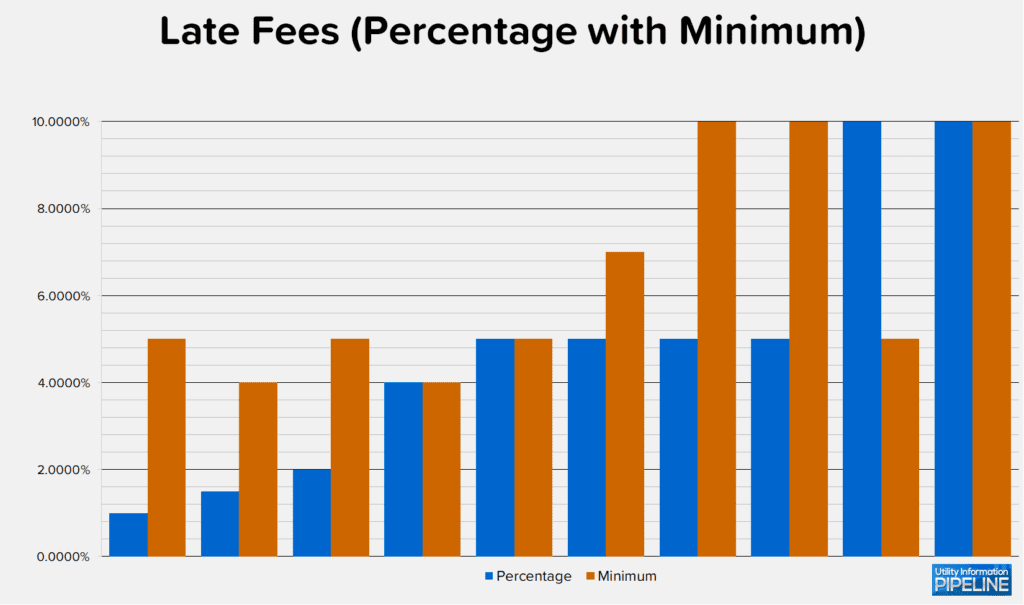
While not technically a fee, this year’s survey asked how, other than the utility bill, each utility notifies customers that a late fee or penalty has been applied. Here are the responses to that question (the total of all responses is greater than the number of participating utilities because some utilities use multiple methods of contact):
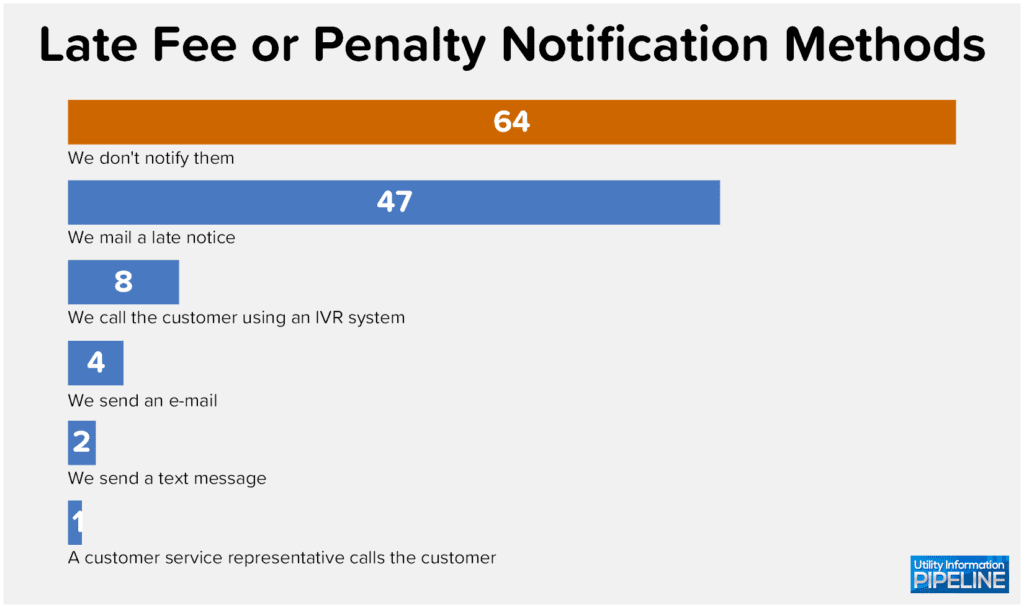
Cut-off fees
Three of the 118 utilities do not cut off for non-payment. All of the 115 that do cut off for non-payment charge a cut-off or reconnect fee as a flat amount. Two of the responding utilities charge an escalating cut-off fee whereby the more times a customer is on the cut-off list, the higher the fee becomes. In those cases, the amount shown in the graph is for first offenders. Additionally, four of the utilities charge a separate disconnect fee and reconnect fee. In those cases, the graph represents the combined total of both fees. Finally, three utilities charge a cut-off fee per service. In those cases, the graph assumes all services are being disconnected.
Cut-off or reconnect fees charged by the 115 utilities range from $15.00 to $150.00 as shown below:
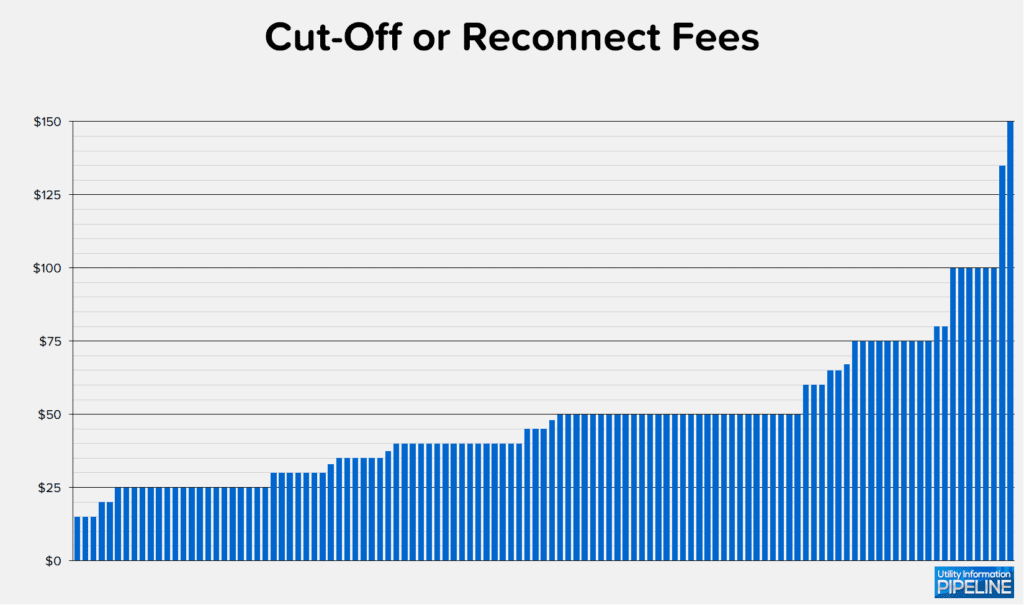
Of the 115 utilities that cut off for non-payment, 85 of them (representing 73.9%) assess the cut-off fee as soon as the cut-off list leaves the office. This percentage of utilities charging the cut-off fee immediately is up 2% from the 2015 Utility Fee Survey.
Cut-off fee terminology
As more utilities adopt this best practice of charging the cut-off fee as soon as the cut-off list leaves the office, many are finding that terms such as “cut-off fee”, “disconnect fee” or “reconnect fee” are becoming outdated. For that reason, the survey asked what each utility calls its cut-off fee. The results are displayed in the following chart:
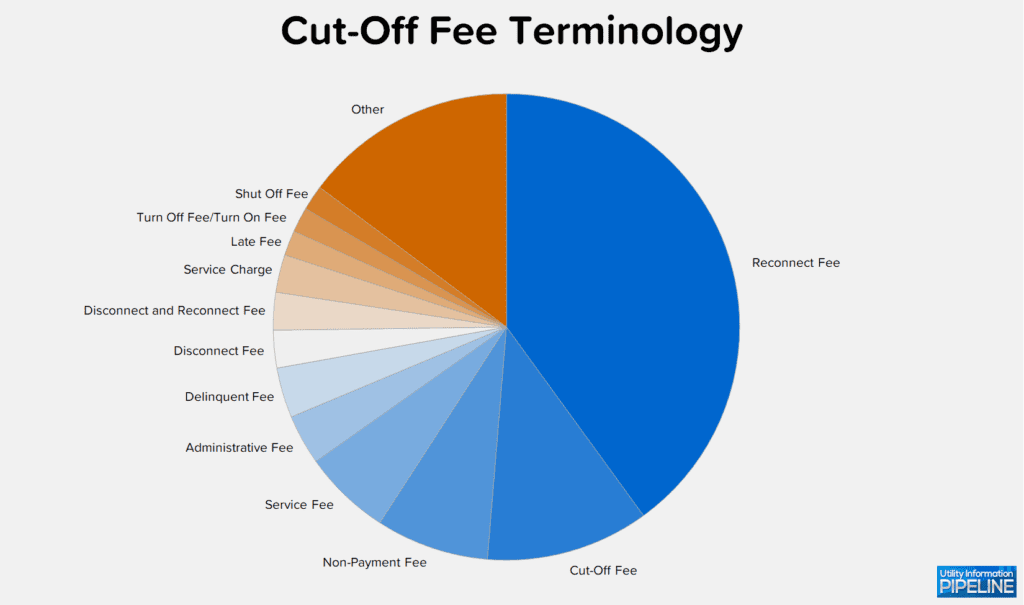
For the number of responses, including the 17 terms included in the “other” category, please click here.
As you can see, again this year, reconnect fee and cut-off fee are still the most popular terms, but many utilities have adopted terms that do not refer to cut-off or reconnection. Calling your cut-off fee “non-payment fee” or “service fee” or any of the other terms that do not imply cut-off or reconnection helps to avoid the inevitable arguments with customers who must pay the fee but have not been cut off.
As with late fees, the survey also asked how, other than the utility bill, customers are notified that they are about to be cut-off for non-payment. The responses are shown below (again, the total of all responses is greater than the number of participating utilities because some utilities use multiple methods of contact):
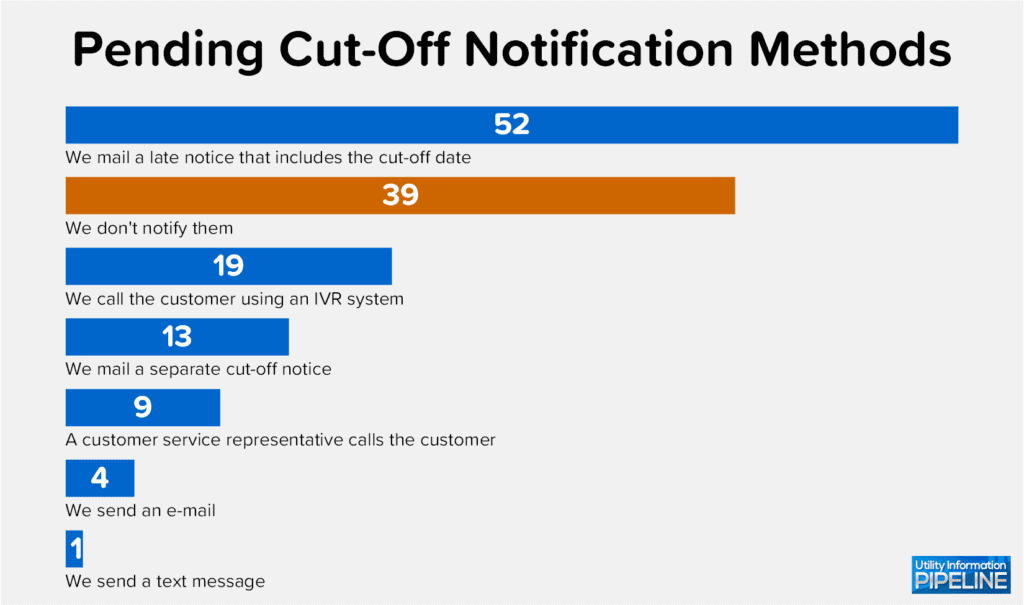
This year’s survey also asked how utilities notify customers after they have been disconnected for non-payment. The responses are shown below (again, a few of the participating utilities employ multiple methods of contact):

After hours reconnect fees
Of the 115 utilities that cut off for non-payment, 49 of them (representing 42.6%) will reconnect after hours and charge a fee for this service. This is down from 51.5% of responding utilities in the 2015 Utility Fee Survey. 39 of the 49 utilities (or 79.6%) will reconnect anytime after regular office hours. The remaining 10 utilities will only reconnect during selected time periods as shown below:
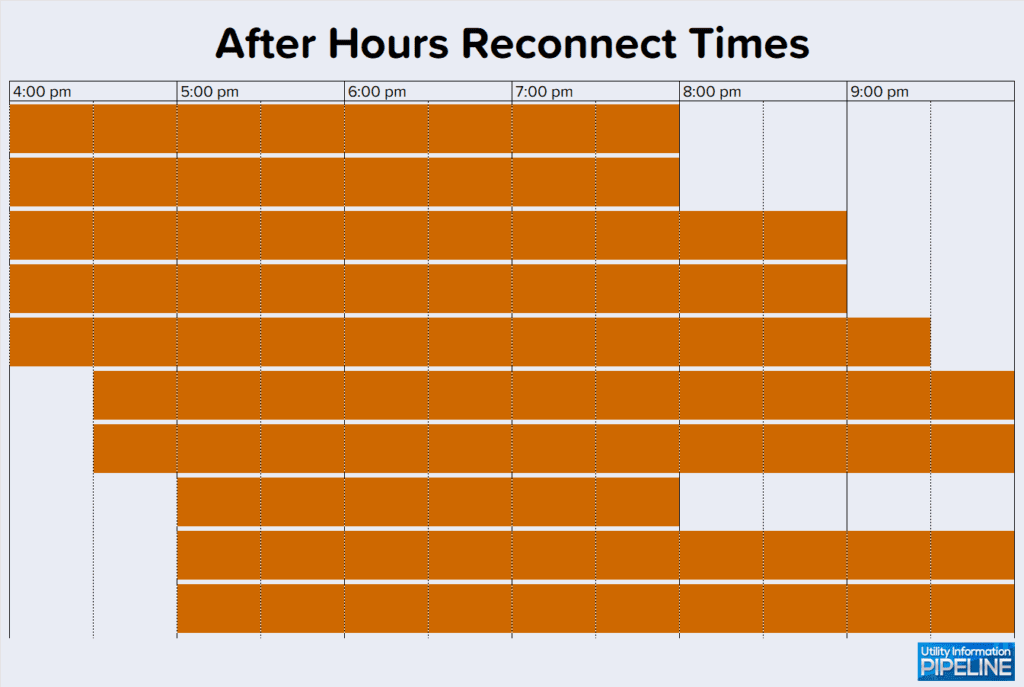
After hours reconnect fee amounts range from $15.00 to $250.00 as shown by the following graph:
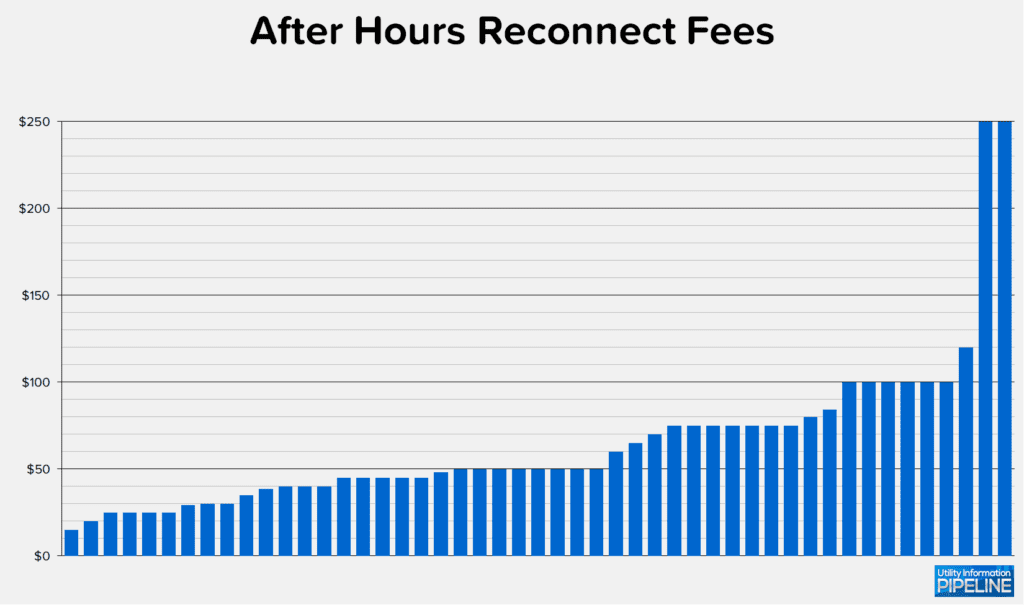
Returned check fees
Of the 118 participating utilities, only one does not charge a returned check fee. For the other 117 utilities, returned check fees range from $10.00 to $50.00, as this graph illustrates:
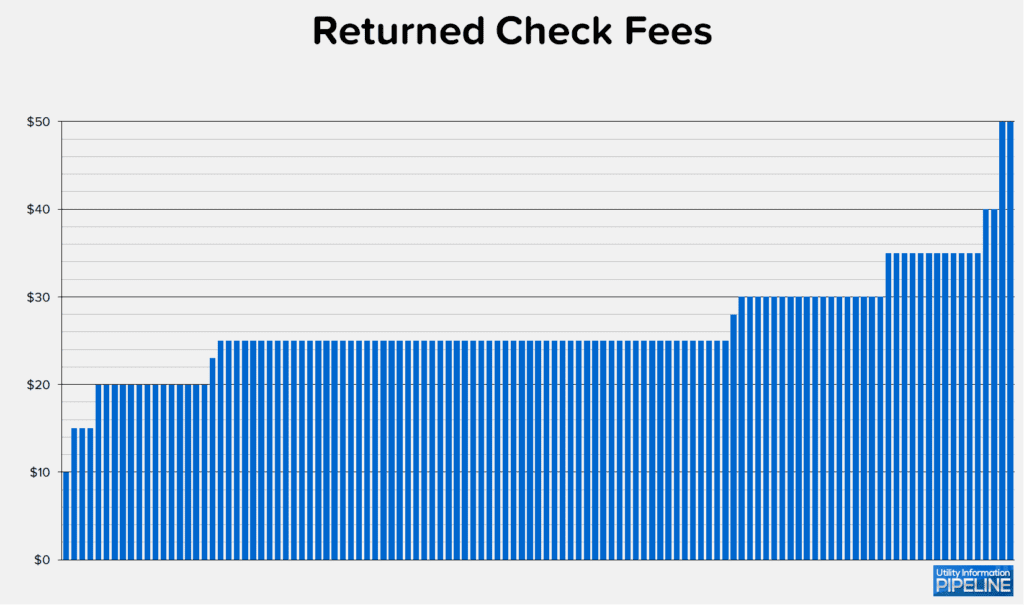
Interestingly, of the 117 utilities who charge a returned check fee, only 64 (or 54.7%) charge the maximum fee allowed by their state. 27 utilities (representing 23.1%) charge less than the maximum allowed and 26 (or 22.2%) charge more than the maximum allowed.
If you’re interested in seeing how your fee compares to the maximum allowed for your state, here is a table with all 50 states.
Application fees
In one of the earliest Utility Information Pipeline issues, I wrote about application for service best practices. One of my recommendations was to charge a non-refundable application fee, in addition to any security deposit, to all new accounts. This year, 56 of the 118 utilities (representing 47.9%) responding to the survey charge such an application or administrative fee. This is down from 51.9% in 2015 and 52.3% in 2012. These application fees range from $5.00 to $150.00 as shown below:
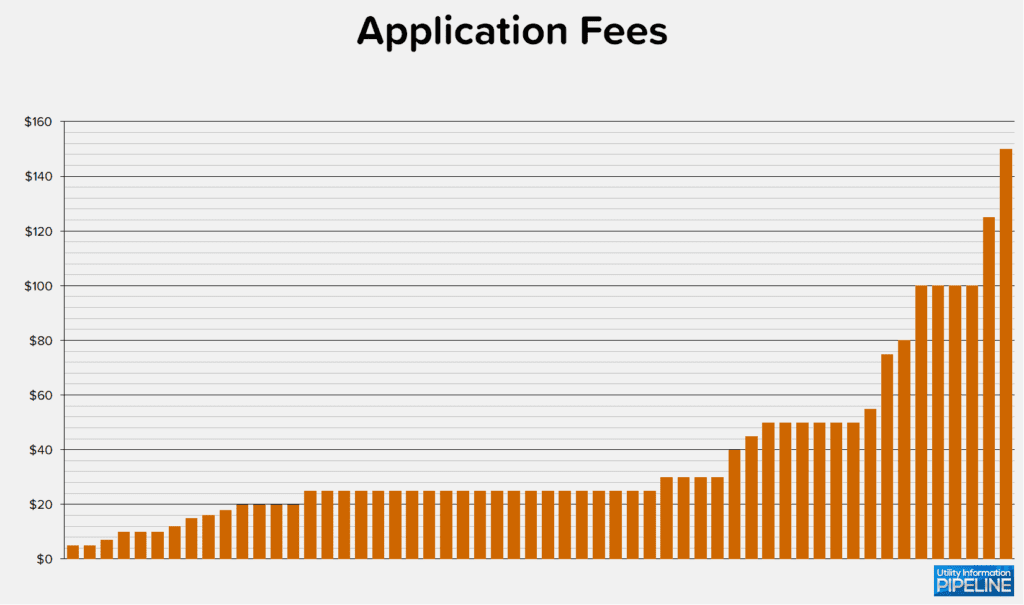
Transfer fees
This year, for the first time, the Utility Fee Survey asked how much utilities charge as a transfer fee for transferring service from one account to another. 52 of the 118 utilities (representing 44.1%) charge a transfer fee ranging from $5.00 to $100 as shown in this graph:
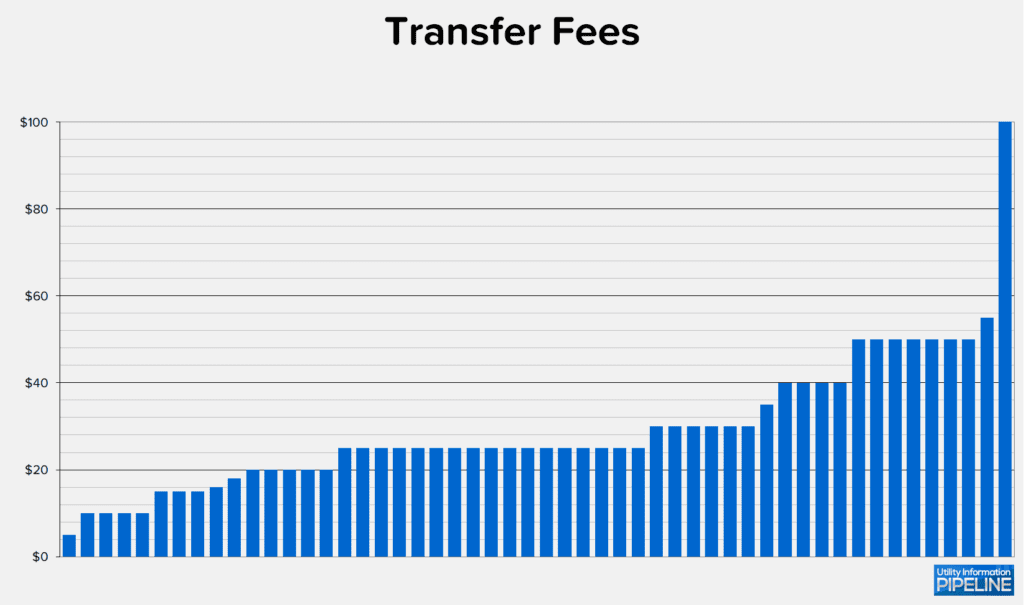
Meter reread fees
28 of the 118 utilities (or 23.7%) charge a meter reread fee if the customer requests their meter be reread. This is virtually unchanged from 2015, where 23.6% of responding utilities charged a meter reread fee. In many cases, this fee is waived if it turns out the customer was correct and the utility misread the meter. Of the utilities that charge a meter reread fee, the fee ranges from $5.00 to $45.00 as this graph shows:
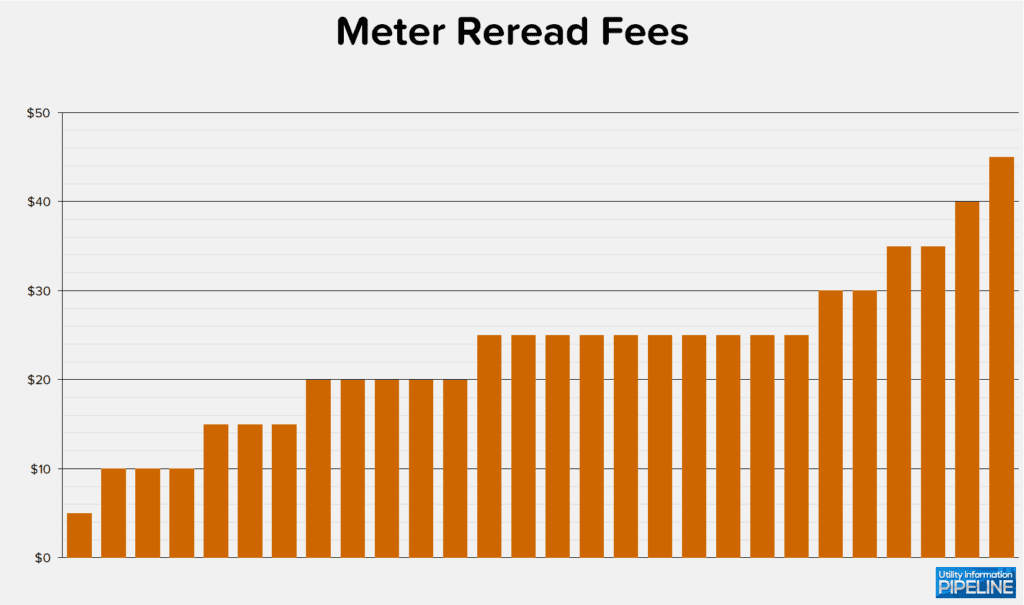
Meter tampering fees
91 of the 118 utilities (or 77.1%) charge a meter tampering fee. This is up from 73.6% in 2015 and 60.2% in 2012. Eleven utilities charge the actual cost of repairs or cost plus an administrative fee. Three charge a fee that depends on the type of meter tampering or damage done to the meter. Four more utilities recover their costs through the judicial system. Ten utilities have an escalating fee that increases with each meter tampering offense. The remaining 63 utilities charge a flat fee ranging from $10.00 to $1000.00 as shown below:
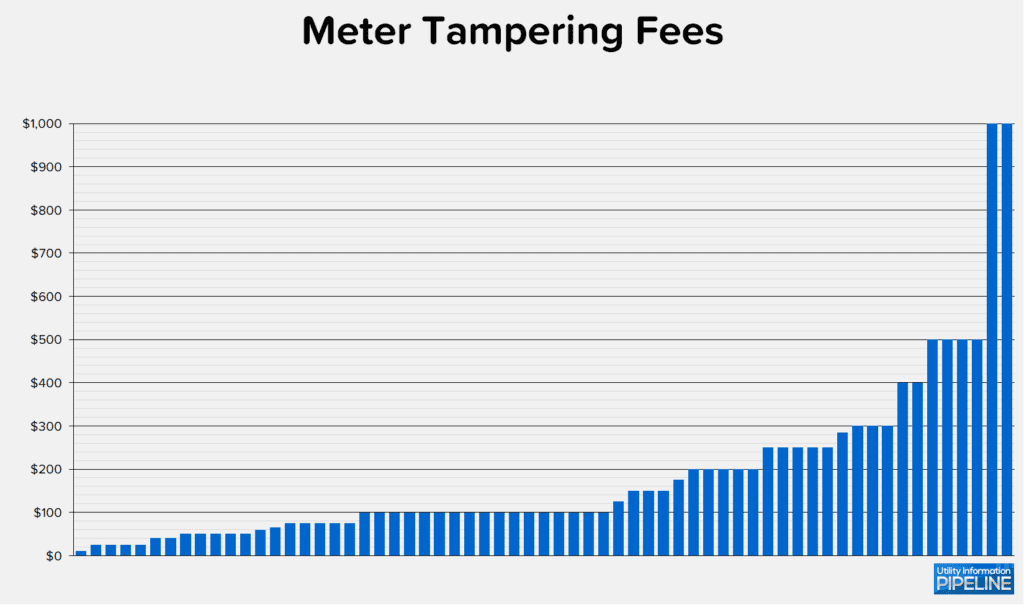
Of the ten utilities that charge an escalating fee, here are the charges for the first, second and third offenses:
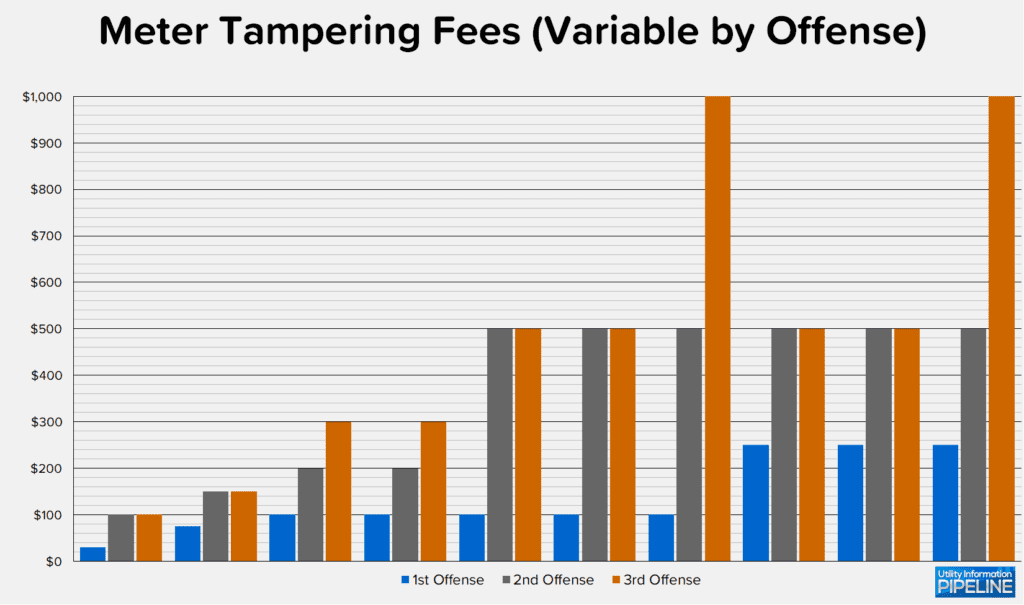
Convenience fees
One of my earliest issues explained why I believe utilities should accept credit cards. Of the 118 utilities responding to the survey, 105 of them (or 89.0%) accept credit cards. This is an increase from 81.1% in 2015 and 62.5% in 2012, so credit card acceptance is quickly becoming a standard practice for most utilities. Of the 105 that do accept credit cards, 62 of these charge a convenience fee on at least one form of credit card payments as shown below:
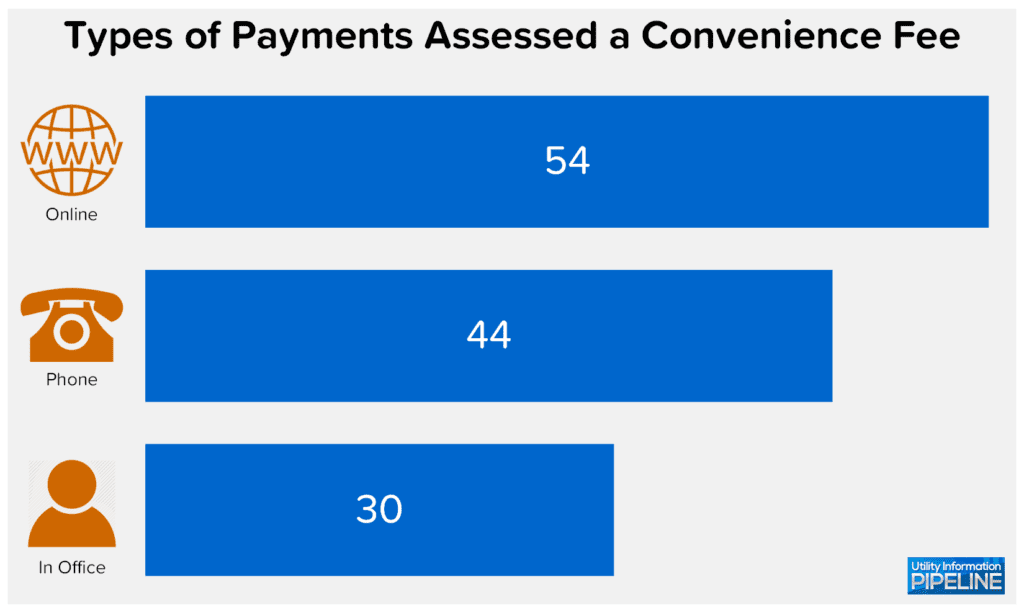
This year, for the first time, the survey asked if the convenience fee is charged by the utility or by a third party. By a large margin, most convenience fees are assessed by a third party as shown here:
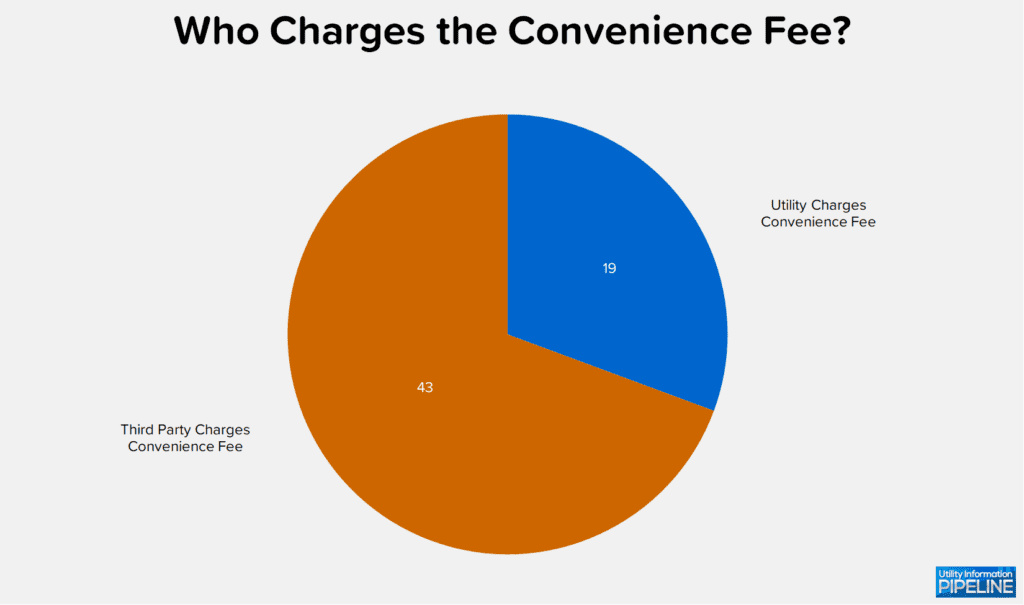
The convenience fees charged by these utilities are too diverse in how they are assessed to be graphed, so they are presented here in a table.
Other fees
In addition to the fees that have been described in the three results issues, the survey asked what other fees utilities charge. Below I’ve listed a few of the more creative fees that were reported:
Meter test fee
A number of utilities charge a fee if the customer requests that their meter be tested. The survey didn’t specifically ask about meter test fees, however most do not charge the fee if it turns out the meter is, in fact, registering incorrectly.
Return trip fee
When turning a meter on, most utilities will not leave the water on if the meter indicates water is running inside the house and no one is home. This requires the utility to make a return trip when the customer is home to turn the meter on again. Several utilities charge a return trip fee to cover the time and expenses involved in returning to the customer’s home.
Same day connection fee
A number of utilities routinely provide next day service for activating new accounts. A few of these utilities charge an additional fee for providing same day service.
Field collection fee
Most utilities have adopted the best practice of not collecting money in the field on cut-off day. At least one utility still allows customers to pay the field technician to avoid being cut off and they charge an additional $25.00 to provide that service.
Does your fee schedule need reviewing?
If you think your fee schedule needs to be updated, please give me a call at 919-673-4050 or e-mail me at gary@utilityinformationpipeline.com to learn how fee review could help.